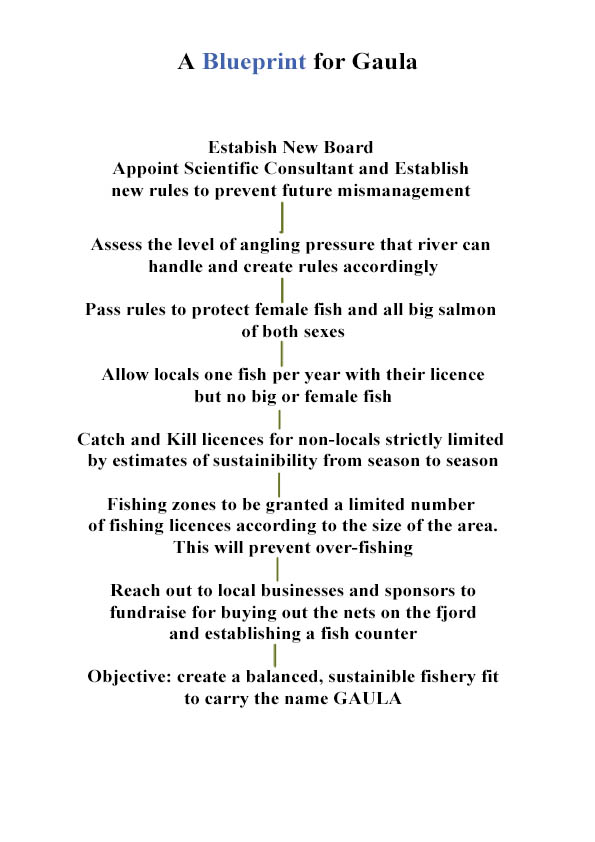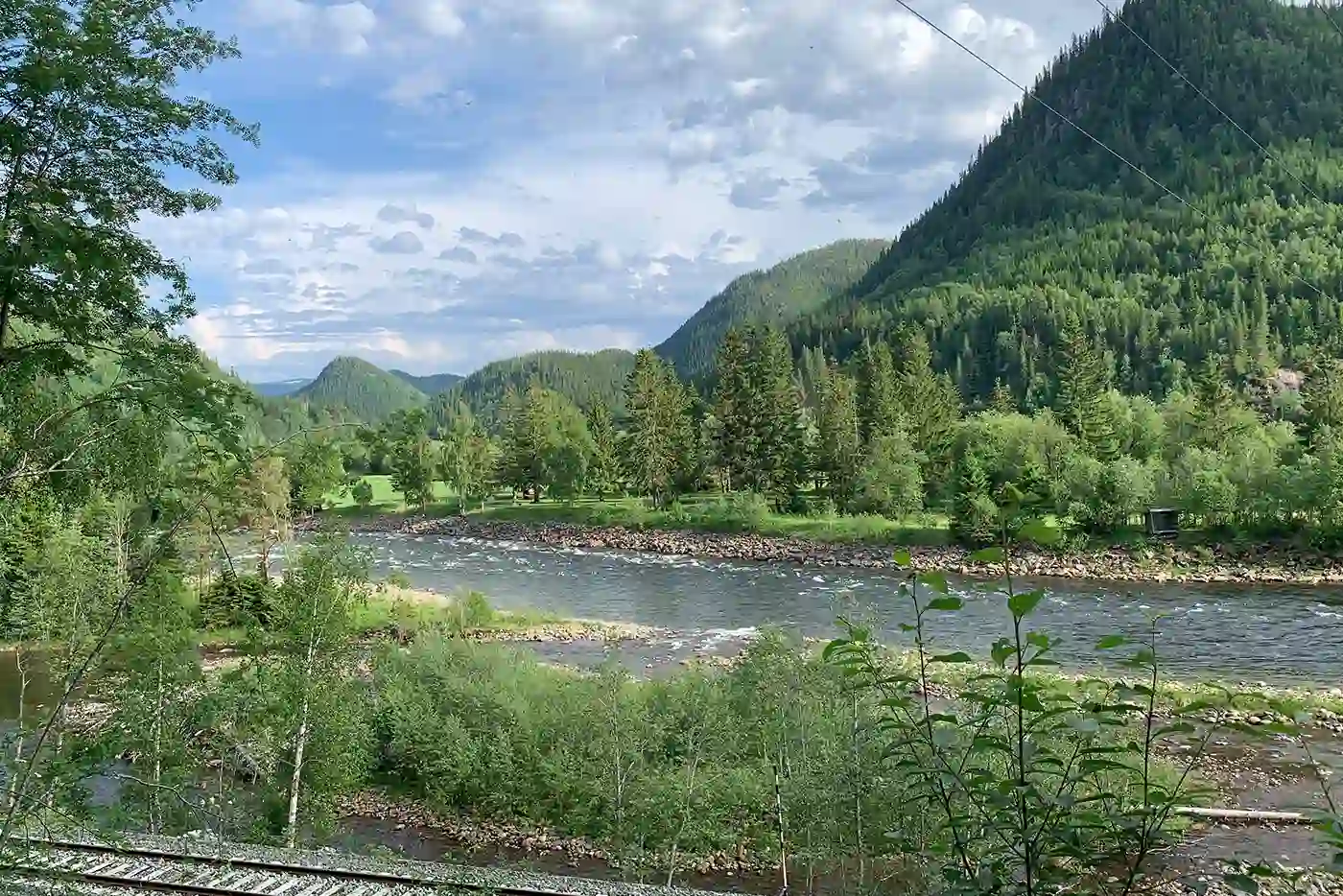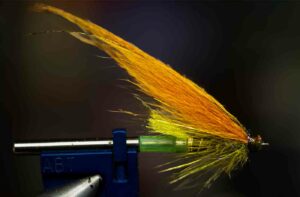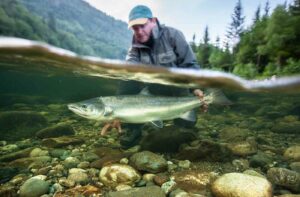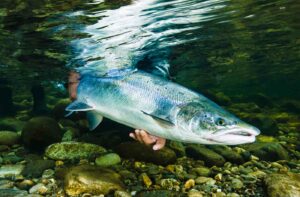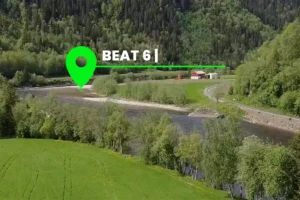Perfect Storm of Threats causes closure of Norway's Premium Salmon Rivers
Following on from my last blog in which I predicted the closure of Norwegian salmon rivers, it gives me no satisfaction to report that my warnings came true. The conclusion of a sad catalogue of river management errors resulted in a slaughter across Norway of large salmon, an action of which the perpetrators should be truly ashamed.
33 Norwegian salmon rivers including Gaula, Orkla, Sjtordal and Namsen are closed until 5th July when some of the rivers may be allowed to open up again if the run improves.
For some years now, Gaula has faced a number of threats. Under the management of Torstein Rognes, the river punched above its weight and defied the trends. During this period, Gaula and Orkla were the toast of the salmon world and regarded as good models for responsible, balanced river management. Both rivers boasted an effective catch and release rate while allowing harvesting of fish of certain sizes. Female fish were protected in July and August.
Things changed when the new Gaula River Board ousted Rognes and later went on to lose an unfair dismissal case. With Rognes out of the way, the board were able to drive through their agenda to increase the number of fish that could be killed on Gaula, especially the big fish.
Gaula was already one of the most heavily fished salmon rivers in Europe. We need to reduce numbers by at least 50 percent in the short term, especially the fish killers. Instead, the board carried out a closing down sale and sold off our Crown Jewels at bargain basement prices, all for the sale of a few more day tickets.
They faced resistance when they announced their intention to introduce new kill limits. Several of Gaula’s major salmon lodges, including ourselves, wrote to the board, pleading with them to hold off the implementation of the new rules until we could evaluate the sort of run we were getting in the early season. They wilfully ignored this and subsequent requests.
As the salmon season for 2024 approached, the warning signs began to flash. A low snow pack and super-hot Spring weather resulted in all the snow melt gone by the start of the season. It was quite obvious that the river would overheat at certain points but the Gaula board refused to publish criteria that might trigger a closure. Such an event was more than likely given the hot spring we endured.
When the new rules were announced it was with very little supporting data. Selective data about spawning was released shortly afterward but this has since been contradicted by external reports which paint a different picture.
Finally, we had the escape of at least 8000 farmed salmon into the Trondheimsfjord. Kilometers of nets have been set to recapture them and of course, wild fish are being caught in the nets too. The remaining farmed stock will go on to add their weak genetics to that of a wild fish stock that is massively depleted.
In the face of growing pressure on our salmon stock and using spawning figures that have since proved to be an inaccurate representation of the true picture, the Gaula River Board failed us. Instead of treading cautiously as I and others advised, they chose to unleash more anglers on Gaula with a licence to kill 400 percent of the wild fish. Such a move was bound to end in catastrophe and it did!
They removed protection already in place for female salmon. They failed to protect our big salmon and on Gaula the release rate for salmon was just 32.7 percent with almost all of the big fish killed.
Of course, they cannot be blamed for the weak influx of fish, nor the escape of 8000 farmed salmon into the Trondheimsfjord but they can be blamed for creating rules which instead of protecting our river at a vulnerable time, they exploited it ruthlessly.
A Manifesto to fix Gaula - What now?
It’s an old cliche, but this really is just the beginning. In my opinion, the intervention of the authorities to close the river, probably for the rest of the season, was the correct decision. It will inconvenience and cost many of us money but it’s the right thing for the river. At least now, fish will be able to get to the spawning zones without being knocked on the head and we have half a chance of decent spawning.
The worst thing that we can do is to continue with the current management policies and we need a plan to rebuild the river and re-establish it as the best salmon river in the world and a haven for salmon.
Firstly, we need a new river board and safe, stable leadership for the next few years. With a new board in place, we need to make the consultation of scientific data and opinion compulsory in the decision making process. Since none of the current leading board members fish or know anything about salmon fishing, we need anglers represented as well, of course as landowners.
Secondly, the new board will establish new rules designed to limit the killing of fish to sustainable levels and to offer total protection for all big fish and female salmon. We should slide urgently assess the level of angling pressure that Gaula can afford and limit licences accordingly.
Thirdly, while locals should be allowed to take one salmon as part of their fishing licence, non-locals will have to buy one of limited number of catch and kill licences. The proceeds from which will go toward rebuilding of infrastructure of the river. Foreign anglers will no longer be entitled to kill fish and will need to purchase an expensive catch and kill licence.
The main objective of phase one is to reduce the number of anglers on the river and to protect the fish population. Assuming that 1000 locals take a fish, we can probably sell 500 catch and kill licences for small to medium size salmon only. With perhaps 1000-1500 tourist licences based largely on catch and release, if we can restore the population of fish to around 5000, we will have a sustainable river. Of course, we can argue about the numbers but hopefully the principle is clear.
Fourthly, with the number of anglers and fish population stabilised, phase two can begin. Initially this will be a serious attempt at buying out of the nets on the fjord and the establishment of fish counters on Gaula so that we are dealing with more precise data.
Fifthly, small landowners will need help in upselling their fishing and adapting to a new (ultimately more profitable) customer base. We will provide a sales service for the whole river and help landowners to attract new customers or adapt to the new rules.
We will commence fundraising and reaching out for contributions from local businesses to support our drive to protect our prime asset.
Finally, we would close the whole river for 4 hours twice in 24 hours, restricting maximum fishing hours to 16.
It’s time for change. Anglers are angry and rightly so. Landowners have so far been indifferent but the crashes that are coming in the value of their rent and their property value should sharpen a few minds.
On the other hand, those landowners that embrace the river and wish to protect it will flourish because rents and values will increase in the long term.
Our fight has only just begun. The future can be bright if we act together, now!
